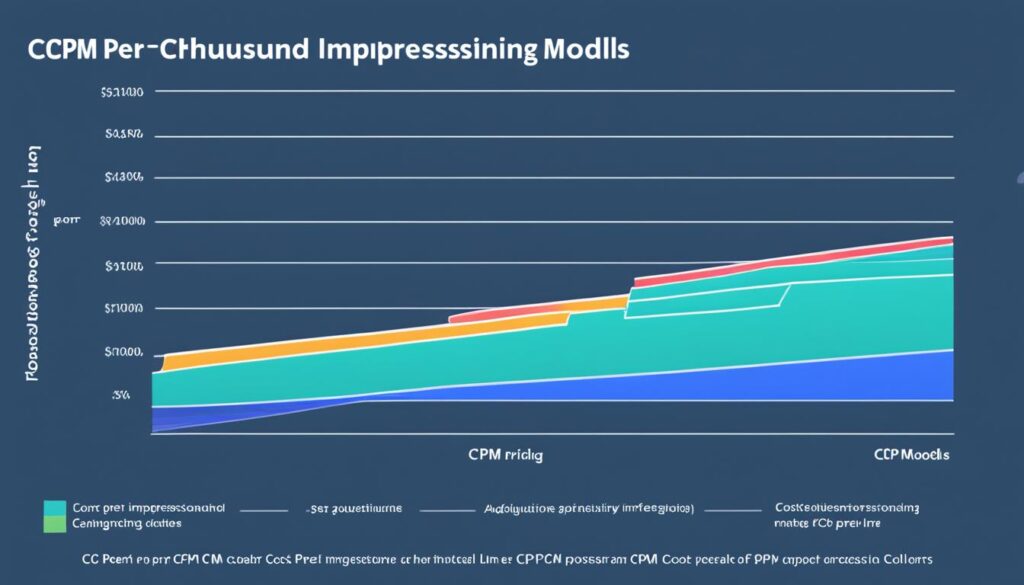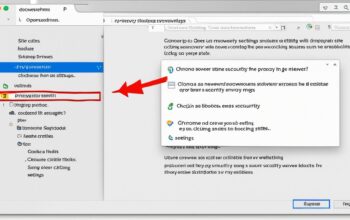In the world of digital marketing, understanding various pricing models is crucial for maximizing the effectiveness of advertising campaigns. One such model is CPM, which stands for Cost Per Mille or Cost Per Thousand. If you’ve come across the term CPM and wondered what it means and how it applies to advertising, you’re in the right place.
Key Takeaways:
- CPM stands for Cost Per Mille or Cost Per Thousand.
- It represents the cost a marketer pays for every one thousand impressions of a digital ad.
- Impressions refer to the number of times an ad is loaded and displayed for users to view.
- CPM can be a cost-effective way for businesses to advertise and increase brand visibility.
- It is just one of several pricing methods available in digital advertising.
How Does CPM Work?
In digital advertising, understanding CPM (cost per thousand) is essential for marketers and advertisers. CPM measures the average cost a company pays for 1,000 ad impressions, making it a key metric for evaluating the success of campaigns. Let’s take a closer look at how CPM works and how it is calculated.
Ad impressions play a crucial role in CPM calculations. An ad impression is counted every time an ad is loaded and displayed for a user. This means that each time someone sees an ad, it counts as one impression.
To calculate CPM, you need to divide the total cost of a CPM campaign by the number of impressions and then multiply it by 1,000. This formula gives you the cost per thousand impressions, which is the benchmark for CPM.
Comparing CPM to other pricing models like cost per click (CPC) and cost per acquisition (CPA) can provide valuable insights. While CPM focuses on impressions, CPC charges advertisers for each click on an ad, and CPA enables businesses to pay for specific actions taken on an ad.
CPM campaigns are often used for brand awareness purposes, as they allow businesses to reach a wide audience and generate visibility. By tracking the efficiency and effectiveness of an ad campaign through CPM, marketers can assess its performance and optimize for better results.
Now, let’s take a look at an example CPM calculation:
| Total Cost of CPM Campaign | Number of Impressions | CPM Calculation |
|---|---|---|
| $5,000 | 100,000 | $50 |
As shown in the example, if a CPM campaign costs $5,000 and generates 100,000 impressions, the CPM would be $50. This means the advertiser is paying $50 for every 1,000 impressions.
Understanding CPM and its calculation is crucial for optimizing ad campaigns, allocating budgets, and measuring brand visibility. By leveraging CPM effectively, businesses can make data-driven decisions to enhance their digital advertising strategies.
Benefits of CPM Advertising
CPM advertising offers numerous benefits for businesses looking to increase brand visibility and reach a wider audience. With its cost-effective nature and targeting options, CPM can be a valuable addition to any marketing strategy.
Cost-Effectiveness
One of the primary advantages of CPM advertising is its cost-effectiveness. Compared to other pricing models, such as cost per click (CPC) or cost per action (CPA), CPM allows businesses to pay for a set number of impressions. This not only helps control the budget but also ensures that businesses only pay for the ad exposures they receive.
Increased Brand Visibility
CPM advertising can significantly increase brand visibility by displaying ads to a wide audience. With each impression, the business’s message is reinforced, creating greater brand awareness among potential customers. This increased visibility can lead to improved brand recognition and credibility.
Targeting Options
CPM campaigns offer various targeting options, allowing businesses to reach their desired audience effectively. By utilizing demographic and interest-based targeting, businesses can deliver their ads to the most relevant users. This targeted approach improves lead generation and increases the likelihood of converting impressions into conversions.
Data and Metrics
CPM advertising provides valuable data and metrics that can be used to optimize future advertising campaigns. By analyzing impressions, click-through rates, and engagement metrics, businesses can gain insights into their audience’s behavior and preferences. This data-driven approach helps refine targeting strategies and improve the overall effectiveness of advertising efforts.
Complementary Marketing Strategy
CPM works well as part of a larger marketing strategy and can be used alongside other pricing models. It can effectively support other tactics like CPC or CPA campaigns, providing a holistic approach to digital advertising. By combining different pricing models, businesses can maximize their reach and achieve their campaign objectives more effectively.
| Benefits of CPM Advertising |
|---|
| Cost-effectiveness |
| Increased brand visibility |
| Targeting options |
| Data and metrics |
| Complementary marketing strategy |
Potential Drawbacks of CPM Advertising
While CPM advertising offers numerous advantages, it is important to consider its potential drawbacks before implementing it as part of your marketing strategy. Understanding these drawbacks will help you make informed decisions and maximize the effectiveness of your campaigns.
One potential drawback of CPM advertising is that it may not guarantee quality traffic. Since CPM focuses on impressions rather than clicks or conversions, your ads may be shown to irrelevant audiences. This can result in wasted advertising spend and lower ROI. It is important to carefully target your ad placements and consider the relevance of the audience you are reaching.
High CPM rates can also be a drawback of this pricing model. In some cases, targeting that is too specific can lead to limited ad placement opportunities, driving up the cost-per-thousand. It’s important to find a balance between targeting and reach to avoid excessively high CPM rates.
Additionally, different types of media and placements can affect CPM variability. For example, ads displayed on premium websites may have higher CPM rates compared to ads shown on less popular platforms. It’s essential to analyze the performance of different media channels and placements to optimize your CPM campaigns.
For smaller, niche companies with specific target audiences, CPM may not always be the best pricing method. Since CPM campaigns focus on wide reach and brand visibility, they may not deliver the desired results for businesses with niche markets. In such cases, alternative pricing models like cost per click (CPC) or cost per action (CPA) may be more suitable.
It’s important to note that evaluating the success of a CPM campaign should go beyond cost alone. While cost is a significant factor, it should be weighed against other performance metrics, such as click-through rates, conversions, and overall campaign objectives.
| Drawbacks of CPM Advertising | Recommendations |
|---|---|
| May not guarantee quality traffic | Target your ad placements carefully and consider the relevance of your audience |
| Focuses on impressions rather than clicks or conversions | Monitor other performance metrics to evaluate campaign success |
| High CPM rates due to specific targeting | Find a balance between targeting and reach to optimize CPM rates |
| Different media and placements can affect CPM variability | Analyze performance across different media channels and placements |
| May not be suitable for smaller, niche companies | Consider alternative pricing models based on your specific target audience |
CPM vs. Other Pricing Models
When it comes to digital advertising, CPM is just one of several pricing models available. Understanding how CPM compares to other models like cost per click (CPC) and cost per action (CPA) is essential for making informed decisions about your advertising strategy.
Cost per Click (CPC)
Cost per click (CPC) involves paying for each click on an ad. This pricing model is often used when businesses want to drive traffic to their website or encourage specific user actions, such as signing up for a newsletter or making a purchase. With CPC, you only pay when users engage with your ad by clicking on it.
Cost per Action (CPA)
Cost per action (CPA) allows businesses to pay for specific actions taken on an ad. These actions could include filling out a form, making a purchase, or requesting a quote. CPA pricing models are beneficial for advertisers who want to track and optimize their return on investment (ROI) based on specific conversions or goals.
While CPM, CPC, and CPA are all viable pricing models, they can also work together as part of a comprehensive marketing strategy. Each model has its own benefits and considerations, including factors such as budget, campaign goals, and target audience.
When choosing a pricing model, it’s important to align it with the specific goals and objectives of your advertising campaign.

By considering the strengths and weaknesses of each pricing model, you can make the best decision for your business and maximize the effectiveness of your digital advertising efforts.
CPM in Digital Marketing
CPM, or cost per thousand, is a fundamental component of digital marketing strategies. It plays a crucial role in helping companies raise awareness and promote their products or services effectively. By utilizing CPM strategies, businesses can build brand recognition and reach a wider audience.
CPM is especially effective as a top-of-the-funnel strategy that focuses on visibility and creating awareness. It allows businesses to display their ads to potential customers and establish a strong presence in the market. Additionally, CPM campaigns can be complemented with other marketing strategies, such as retargeting ads and email marketing, to further enhance their effectiveness.
One of the key advantages of CPM is that it serves as a valuable metric for measuring the success of digital marketing efforts. It provides insights into how well a campaign is performing and helps businesses make data-driven decisions. By understanding CPM and its role in digital marketing, businesses can make informed choices when planning their advertising strategies and allocate their resources effectively.
In summary, CPM is an essential aspect of digital marketing that enables businesses to raise awareness, reach a wider audience, and measure campaign success. By incorporating CPM into their marketing strategies and utilizing it alongside other tactics, businesses can enhance their brand visibility and maximize their advertising efforts.
FAQ
What does CPM stand for?
CPM stands for cost per mille, which means cost per thousand.
What is CPM in advertising?
CPM is a pricing model used in digital marketing where marketers pay for every one thousand impressions of a digital ad.
How do you calculate CPM?
To calculate CPM, divide the total cost of a CPM campaign by the number of impressions and multiply by 1,000.
What are impressions in CPM advertising?
Impressions refer to the number of times an ad is loaded and displayed for users to view.
What are the benefits of CPM advertising?
CPM advertising can be a cost-effective way to increase brand visibility, target specific audiences, and provide valuable data for future campaigns.
What are the potential drawbacks of CPM advertising?
CPM advertising may not guarantee quality traffic, and high CPM rates can result from targeting that is too specific or limited ad placement opportunities.
How does CPM compare to other pricing models in digital advertising?
CPM is just one pricing model, and it can be compared to other models like cost per click (CPC) and cost per action (CPA).
How does CPM fit into digital marketing strategies?
CPM is often used to build brand recognition and reach a wider audience, complementing other strategies like retargeting ads and email marketing.
What is the role of CPM in digital marketing?
CPM helps companies raise awareness, promote products or services, and measure the success of their digital marketing efforts.
Why is it important to understand CPM in advertising?
Understanding CPM can help businesses make informed decisions when planning their advertising strategies and evaluating campaign success.







